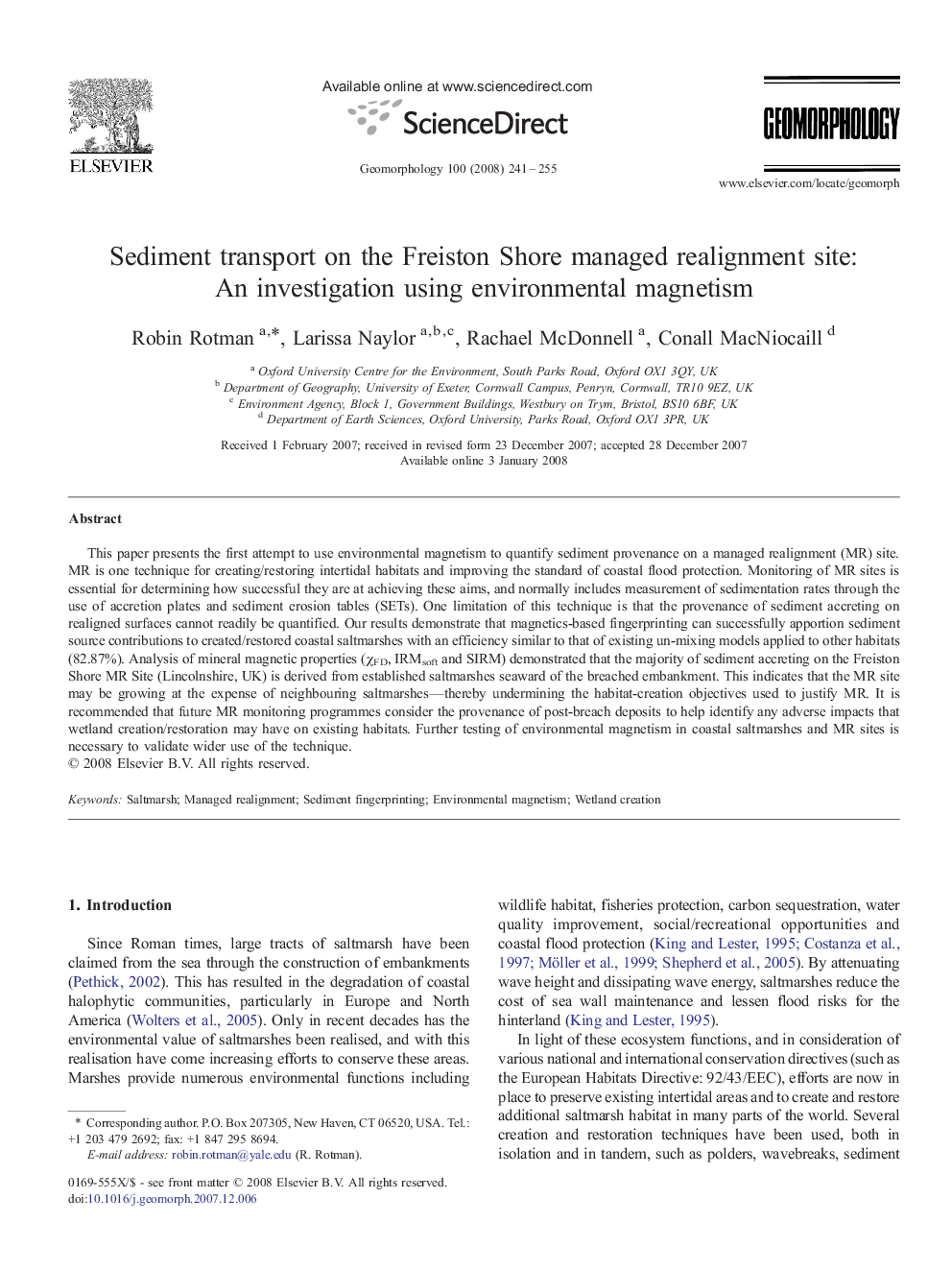| Article ID | Journal | Published Year | Pages | File Type |
|---|---|---|---|---|
| 4686697 | Geomorphology | 2008 | 15 Pages |
Abstract
This paper presents the first attempt to use environmental magnetism to quantify sediment provenance on a managed realignment (MR) site. MR is one technique for creating/restoring intertidal habitats and improving the standard of coastal flood protection. Monitoring of MR sites is essential for determining how successful they are at achieving these aims, and normally includes measurement of sedimentation rates through the use of accretion plates and sediment erosion tables (SETs). One limitation of this technique is that the provenance of sediment accreting on realigned surfaces cannot readily be quantified. Our results demonstrate that magnetics-based fingerprinting can successfully apportion sediment source contributions to created/restored coastal saltmarshes with an efficiency similar to that of existing un-mixing models applied to other habitats (82.87%). Analysis of mineral magnetic properties (ÏFD, IRMsoft and SIRM) demonstrated that the majority of sediment accreting on the Freiston Shore MR Site (Lincolnshire, UK) is derived from established saltmarshes seaward of the breached embankment. This indicates that the MR site may be growing at the expense of neighbouring saltmarshes-thereby undermining the habitat-creation objectives used to justify MR. It is recommended that future MR monitoring programmes consider the provenance of post-breach deposits to help identify any adverse impacts that wetland creation/restoration may have on existing habitats. Further testing of environmental magnetism in coastal saltmarshes and MR sites is necessary to validate wider use of the technique.
Related Topics
Physical Sciences and Engineering
Earth and Planetary Sciences
Earth-Surface Processes
Authors
Robin Rotman, Larissa Naylor, Rachael McDonnell, Conall MacNiocaill,
